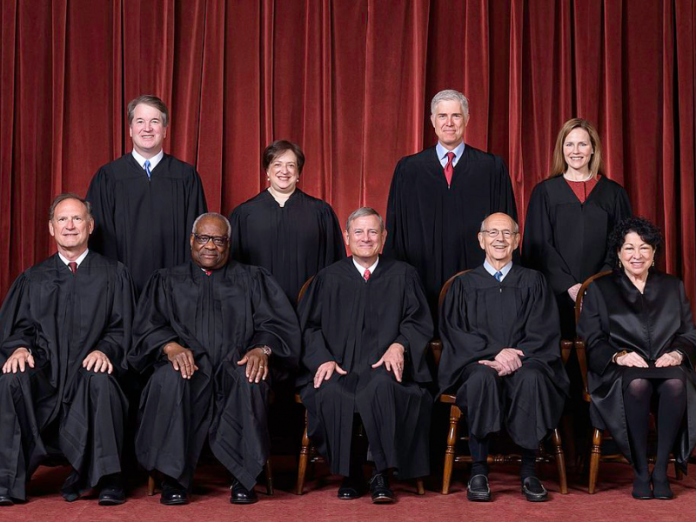Life, Liberty, Property #23: Supreme Court defends equality under the law in its landmark affirmative action decision.
IN THIS ISSUE:
-
-
-
- Supreme Court Defends Equality
-
-
- SUBSCRIBE to Life, Liberty & Property (it’s free). Read previous issues.
Supreme Court Defends Equality
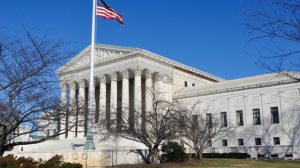 In a week of important Supreme Court rulings, one of the most momentous of all arrived on Thursday. The Court’s decision in Students for Fair Admissions, Inc. v. President and Fellows of Harvard College rectifies several decades’ worth of tortured and incoherent decisions by coming down firmly for equal treatment under the law.
In a week of important Supreme Court rulings, one of the most momentous of all arrived on Thursday. The Court’s decision in Students for Fair Admissions, Inc. v. President and Fellows of Harvard College rectifies several decades’ worth of tortured and incoherent decisions by coming down firmly for equal treatment under the law.
The decades-long debate over affirmative action racial policies has been consistently perverted by consequentialist arguments. Good things will happen if we do this, proponents say. Bad things will happen too, opponents say. The general tenor of the discussion has been that the good outweighs the bad, so these laws and policies are just, and if they violate people’s rights, that’s a small price to pay for those benefits.
The desire to give needy people a helping hand is laudable. People should be free to do so for one another. Government should not prevent that.
That sentiment does not justify government taking from one person and giving to another as a way of equalizing people’s conditions. Small efforts in that regard are perhaps easily dismissed as a mere annoyance. Bigger manifestations, however, are easily identified as tyrannical. Taking the property of an ethnic group, killing them, and giving their possessions to some other group is clearly monstrous. Governments have done that on a terrible scale, especially in the twentieth century, and all civilized people recognize that such actions are atrocious.
Efforts to draw the line between laudable annoyances and unjustified oppression are fraught with anguish because people naturally differ in their assessments of the benefits and costs of government schemes to promote equality. The problem is that these assessments are based on preferences, which vary, and not on principles, which are fixed. The use of consequentialist arguments is central to this confusion.
The irreconcilable conflict between preferences and principles is evident in the Justices’ dueling opinions in the Harvard case.
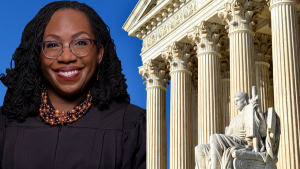 Associate Justice Ketanji Brown Jackson dwells on consequences, ferociously castigating the majority Justices for tyrannically preventing the good people of Harvard University and the University of North Carolina (UNC) from using taxpayer money to support admission of students of one color rather than another.
Associate Justice Ketanji Brown Jackson dwells on consequences, ferociously castigating the majority Justices for tyrannically preventing the good people of Harvard University and the University of North Carolina (UNC) from using taxpayer money to support admission of students of one color rather than another.
“With let-them-eat-cake obliviousness, the majority pulls the ripcord and announces ‘colorblindness for all’ by legal fiat. But deeming race irrelevant in law does not make it so in life,” Jackson stated.
Jackson is factually correct in that second sentence. The Court’s acknowledgment of the fundamental truth that race is and must be “irrelevant in law” will not remove all differences among races. That is not a proper goal of law, however, and it is a thoroughly destructive maxim for courts to pursue.
Jackson wants governments to equalize the conditions of various groups of people. That goal authorizes a government to treat people unequally. The road to equality thus requires a long detour through the land of inequality. Jackson’s position is obviously incoherent.
In addition to that fundamental flaw of reasoning, Jackson is wrong to claim that the Court’s majority is trying to establish a position “by legal fiat.” On the contrary, the majority position agrees with the Constitution, the Fourteenth Amendment, the object of government, common sense, justice, fairness, and, yes, equality.
A central purpose of government is to prevent people from harming one another. That is done in great part by resolving disputes over people’s treatment of each other, accomplished through civil and criminal procedures alike. The job of a court is to determine whether one person has harmed another, and if so, what remedy is appropriate. That can be accomplished only if the court looks at the evidence in a fair and unbiased manner.
A white or Asian applicant for enrollment in Harvard University is not harming any applicant who is less qualified on measures other than race. On the other hand, Harvard, as a private enterprise, has a natural right to choose whomever it likes for admission on any basis whatever. If Harvard wants to choose only short, bandy-legged redheads, that is the institution’s right. Freedom of association is a natural right, properly recognized in the Ninth and Tenth Amendments to the Constitution and the Due Process Clause of the Fifth Amendment.
Harvard, however, has chosen to benefit from government aid. The federal government has chosen to offer these blandishments. Under such circumstances, discrimination against individual applicants for admission based on characteristics not directly related to the purpose of admission—likely success in college—is not acceptable. The government may not do so, and institutions that accept benefits from the government must accept that limitation.
If Harvard wants to discriminate against whites, Asians, heterosexuals, and others who are not members of “protected classes” (the latter in itself constituting an outrage against the right of association), the university has a natural right to do so, provided only that it does not accept any favors from the government.
Harvard could certainly afford to do that. What Harvard wants, and what the Court’s minority wants to force taxpayers to support, is for the government to require every other college and university to do what Harvard wants to do, and to use taxpayer money to lure them all into a scheme to do so. Thus, Harvard can shine as an example of altruism while ensuring that it can still have the most talented student body possible.
The legal interpretation Harvard and UNC were defending places on their competitors the same yoke Harvard and UNC want to put on themselves, and it uses the force of government to impose a severe financial hardship on any competitor who would attempt to gain an advantage by not accepting the same restriction on its choices. It is a scheme to benefit elite institutions and inhibit competition. A major benefit is social status, a highly sought-after and very limited asset.
Harvard’s position is a manifestation not of love of one’s neighbors but of greed, force, chicanery, and cronyism.
That is obviously a misuse of the power to make law. In his opinion concurring with the majority decision, Associate Justice Clarence Thomas argues that the Fourteenth Amendment was intended to establish “the view adopted in the Court’s opinion today, requiring ‘the absolute equality of all citizens’ under the law.”
Thomas quotes the Civil Rights Act of 1866 to establish the intention behind the Fourteenth Amendment:
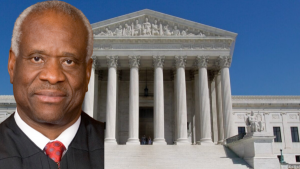 “… [C]itizens, of every race and color, without regard to any previous condition of slavery or involuntary servitude, except as a punishment for crime whereof the party shall have been duly convicted, shall have the same right, in every State and Territory in the United States, to make and enforce contracts, to sue, be parties, and give evidence, to inherit, purchase, lease, sell, hold, and convey real and personal property, and to full and equal benefit of all laws and proceedings for the security of person and property, as is enjoyed by white citizens, and shall be subject to like punishment, pains, and penalties, and to none other, any law, statute, ordinance, regulation, or custom, to the contrary notwithstanding.”
“… [C]itizens, of every race and color, without regard to any previous condition of slavery or involuntary servitude, except as a punishment for crime whereof the party shall have been duly convicted, shall have the same right, in every State and Territory in the United States, to make and enforce contracts, to sue, be parties, and give evidence, to inherit, purchase, lease, sell, hold, and convey real and personal property, and to full and equal benefit of all laws and proceedings for the security of person and property, as is enjoyed by white citizens, and shall be subject to like punishment, pains, and penalties, and to none other, any law, statute, ordinance, regulation, or custom, to the contrary notwithstanding.”
Thomas correctly notes that the 1866 law “was decidedly colorblind, … providing the same rights to all.” As opponents of equal justice raised doubts about the constitutionality of the Civil Rights Act of 1866, members of Congress began to prepare a proposed amendment to codify the principle of racial colorblindness in the Constitution: “In April, Representative Thaddeus Stevens proposed to the Joint Committee an amendment that began, “[n]o discrimination shall be made by any State nor by the United States as to the civil rights of persons because of race, color, or previous condition of servitude,’” Thomas writes.
The point of the law, and the Fourteenth Amendment which followed, was to prevent states from enacting laws that treat people of different races or colors differently. In what Thomas describes as “a new birth of freedom,” the amendment opens with “a firm statement of equality before the law”:
“All persons born or naturalized in the United States, and subject to the jurisdiction thereof, are citizens of the United States and of the State wherein they reside. No State shall make or enforce any law which shall abridge the privileges or immunities of citizens of the United States; nor shall any State deprive any person of life, liberty, or property, without due process of law; nor deny to any person within its jurisdiction the equal protection of the laws.”
The Fourteenth Amendment puts strictures on government—and no other person or institution. It is about the nation’s laws and those of the states. In 1880, Thomas notes, the Court observed that the amendment was an “exemption from unfriendly legislation” directed against blacks:
“The words of the [Fourteenth A]mendment . . . contain a necessary implication of a positive immunity, or right, most valuable to the colored race,— the right to exemption from unfriendly legislation against them distinctively as colored.” Strauder v. West Virginia, 100 U. S. 303, 307–308 (1880).
Thomas goes on to dismantle the objections of Associate Justice Sandra Sotomayor, whose dissent argues that the amendment “forbids only laws that hurt, but not help, blacks,” as Thomas puts it. “Such a theory lacks any basis in the original meaning of the Fourteenth Amendment,” Thomas observes, which is in itself a dispositive refutation of Sotomayor’s argument for affirmative action. In addition, however, Thomas notes that the statutes Sotomayor cites as support for her interpretation of the amendment do not show that those who wrote and approved it meant it to apply only for the benefit of blacks: “it is clear that these statutes are fully consistent with the colorblind view,” Thomas writes.
Moreover, Thomas notes, “there was a wide range of federal and state statutes enacted at the time of the Fourteenth Amendment’s adoption and during the period thereafter that explicitly sought to discriminate against blacks on the basis of race or a proxy for race.” Those who make Sotomayor’s argument hide that inconvenient truth, Thomas writes,
[P]roponents of an antisubordination view necessarily do not take those laws as evidence of the Fourteenth Amendment’s true meaning. And rightly so. Neither those laws, nor a small number of laws that appear to target blacks for preferred treatment, displace the equality vision reflected in the history of the Fourteenth Amendment’s enactment. This is particularly true in light of the clear equality requirements present in the Fourteenth Amendment’s text.
Even the claims of fact regarding the benefits of the law are unfounded, Thomas states. For example,
More fundamentally, [Thomas writes,] it is not clear how racial diversity, as opposed to other forms of diversity, uniquely and independently advances Harvard’s goal. This is particularly true because Harvard blinds itself to other forms of applicant diversity, such as religion. It may be the case that exposure to different perspectives and thoughts can foster debate, sharpen young minds, and hone students’ reasoning skills. But, it is not clear how diversity with respect to race, qua race, furthers this goal. [Citations removed.]
Thomas points out that Harvard and UNC have discriminated against other groups over the years, notably Jews in Harvard’s case, and religious believers. Their current policies of discrimination, called affirmative action, simply move the discrimination to different groups without remedying the institutions’ past transgressions:
As noted above, both Harvard and UNC have a history of racial discrimination. But, neither have even attempted to explain how their current racially discriminatory programs are even remotely traceable to their past discriminatory conduct. Nor could they; the current race-conscious admissions programs take no account of ancestry and, at least for Harvard, likely have the effect of discriminating against some of the very same ethnic groups against which Harvard previously discriminated (i.e., Jews and those who are not part of the white elite).
All the while, Harvard and UNC ask us to blind ourselves to the burdens imposed on the millions of innocent applicants denied admission because of their membership in a currently disfavored race.
The Constitution neither commands nor permits such a result.
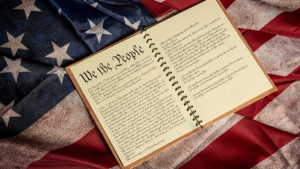 Elite institutions, Thomas observes, are using the law to revise and continue practices that they admit were wrong in the past.
Elite institutions, Thomas observes, are using the law to revise and continue practices that they admit were wrong in the past.
Thomas exposes the heart of the scam I described above, and the fact that it benefits elite institutions while harming those it is claimed to be helping:
Even taking the desire to help on its face, what initially seems like aid may in reality be a burden, including for the very people it seeks to assist. Take, for example, the college admissions policies here. “Affirmative action” policies do nothing to increase the overall number of blacks and Hispanics able to access a college education. Rather, those racial policies simply redistribute individuals among institutions of higher learning, placing some into more competitive institutions than they otherwise would have attended. …
In doing so, those policies sort at least some blacks and Hispanics into environments where they are less likely to succeed academically relative to their peers. Ibid. The resulting mismatch places “many blacks and Hispanics who likely would have excelled at less elite schools . . . in a position where underperformance is all but inevitable because they are less academically prepared than the white and Asian students with whom they must compete.”
In addition, these policies stamp blacks and Hispanics “with a badge of inferiority” and “tain[t] the accomplishments of all those who are admitted as a result of racial discrimination.” Thomas has long been tarred by that very accusation from leftists who disagree with his view of the law and Constitution.
“Justice Jackson has a different view,” Thomas notes in a scathing rebuttal to her dissent:
Rather than focusing on individuals as individuals, her dissent focuses on the historical subjugation of black Americans, invoking statistical racial gaps to argue in favor of defining and categorizing individuals by their race. As she sees things, we are all inexorably trapped in a fundamentally racist society, with the original sin of slavery and the historical subjugation of black Americans still determining our lives today. The panacea, she counsels, is to unquestioningly accede to the view of elite experts and reallocate society’s riches by racial means as necessary to “level the playing field,” all as judged by racial metrics. I strongly disagree. [Citations removed.]
Jackson sees everything through a racial lens and proposes to unleash elites to reorder everything to her liking, Thomas notes. Such an attitude is downright megalomaniacal and is exceedingly dangerous in authorizing anything up to and including tyranny to enforce her personal desires.
Individual judges’ desires are not the Court’s business, Thomas observes. The issue before the Court is the proper application of law under the nation’s Constitution, and nothing else, Thomas notes:
First, as stated above, any statistical gaps between the average wealth of black and white Americans is constitutionally irrelevant. I, of course, agree that our society is not, and has never been, colorblind. People discriminate against one another for a whole host of reasons. But, under the Fourteenth Amendment, the law must disregard all racial distinctions. [Citations removed.]
Arguing that, “on her view, almost all of life’s outcomes may be unhesitatingly ascribed to race,” Thomas says that Jackson’s premises and reasoning are false and thoroughly destructive while her motives are dubious:
JUSTICE JACKSON uses her broad observations about statistical relationships between race and select measures of health, wealth, and well-being to label all blacks as victims. Her desire to do so is unfathomable to me. I cannot deny the great accomplishments of black Americans, including those who succeeded despite long odds.
Nor do JUSTICE JACKSON’s statistics regarding a correlation between levels of health, wealth, and well-being between selected racial groups prove anything. Of course, none of those statistics are capable of drawing a direct causal link between race—rather than socioeconomic status or any other factor—and individual outcomes. So JUSTICE JACKSON supplies the link herself: the legacy of slavery and the nature of inherited wealth. This, she claims, locks blacks into a seemingly perpetual inferior caste. Such a view is irrational; it is an insult to individual achievement and cancerous to young minds seeking to push through barriers, rather than consign themselves to permanent victimhood.
Jackson’s line of thinking is bitter and narrowminded, Thomas writes:
Accordingly, JUSTICE JACKSON’s race-infused world view falls flat at each step. Individuals are the sum of their unique experiences, challenges, and accomplishments. What matters is not the barriers they face, but how they choose to confront them. And their race is not to blame for everything—good or bad—that happens in their lives. A contrary, myopic world view based on individuals’ skin color to the total exclusion of their personal choices is nothing short of racial determinism.
Thomas reveals Jackson as a purveyor of the scam I noted above, in which those who would discriminate against others claim the moral high ground for ignoble, elitist attitudes and activities:
JUSTICE JACKSON then builds from her faulty premise to call for action, arguing that courts should defer to “experts” and allow institutions to discriminate on the basis of race. Make no mistake: Her dissent is not a vanguard of the innocent and helpless. It is instead a call to empower privileged elites, who will “tell us [what] is required to level the playing field” among castes and classifications that they alone can divine.
This, Thomas notes, is elitism on steroids. Despite their protestations to the contrary, the administrators of these schemes don’t care about the applicants before them; they treat them as statistics. Jackson is guilty of the same offense, Thomas says. Discussing Jackson’s comparison of two hypothetical applicants to UNC, Thomas observes that they “are themselves race-based stereotypes” and that the white one, whom Jackson calls John, has done nothing to deserve the punishment of being refused admission:
[W]hy is it that John should be judged based on the actions of his great-great-great-grandparents? And what would JUSTICE JACKSON say to John when deeming him not as worthy of admission: Some statistically significant number of white people had advantages in college admissions seven generations ago, and you have inherited their incurable sin? …
If such a burden would seem difficult to impose on a bright-eyed young person, that’s because it should be. History has taught us to abhor theories that call for elites to pick racial winners and losers in the name of sociological experimentation.
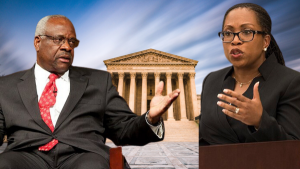 Jackson, UNC, Harvard, and the whole affirmative action movement punish John, who has done nothing to harm any alternative applicants, for things other people did more than a century ago. These policies pervert the role of the law, which is to keep people from harming one another and to provide redress when that happens.
Jackson, UNC, Harvard, and the whole affirmative action movement punish John, who has done nothing to harm any alternative applicants, for things other people did more than a century ago. These policies pervert the role of the law, which is to keep people from harming one another and to provide redress when that happens.
Thomas shows Jackson to be no protector of the oppressed but instead an attack dog for elitism. The other concurring opinions, from Justice Neil Gorsuch and Justice Thomas, and from Justice Brett Kavanaugh, further demolish the universities’ (and minority Justices’) interpretation of the laws in question and Court precedents.
Thomas’s concurring opinion is much longer than the Court’s decision itself, in which Thomas joins, and may have broader implications. The majority opinion, written by Chief Justice John Roberts, states that the equal opportunity programs do not survive “strict scrutiny,” the Court’s standard for determining whether racial discrimination is acceptable under the law. The programs in question violate the Fourteenth Amendment by affording the use of government power (meaning money and other resources granted through federal statutes) to deny some people “the equal protection of the laws,” Roberts writes:
Proposed by Congress and ratified by the States in the wake of the Civil War, the Fourteenth Amendment provides that no State shall “deny to any person . . . the equal protection of the laws.” Proponents of the Equal Protection Clause described its “foundation[al] principle” as “not permit[ing] any distinctions of law based on race or color.” Any “law which operates upon one man,” they maintained, should “operate equally upon all.”
The decision of the Court stresses that the affirmative action programs do not meet equal-treatment standards and that the programs’ consequences work to the disadvantage of people who have done nothing wrong: “College admissions are zero-sum, and a benefit provided to some applicants but not to others necessarily advantages the former at the expense of the latter,” Roberts writes. The Court’s opinion states that the programs do not pass muster, but it does not say that government programs must be entirely colorblind:
Because Harvard’s and UNC’s admissions programs lack sufficiently focused and measurable objectives warranting the use of race, unavoidably employ race in a negative manner, involve racial stereotyping, and lack meaningful end points, those admissions programs cannot be reconciled with the guarantees of the Equal Protection Clause. At the same time, nothing prohibits universities from considering an applicant’s discussion of how race affected the applicant’s life, so long as that discussion is concretely tied to a quality of character or unique ability that the particular applicant can contribute to the university.
The majority opinion stops short of crossing the Rubicon and stating outright that equal protection of the law means that the law—including government programs and therefore the actions of those who benefit from them—must be colorblind. Although it comes to the right conclusion regarding the programs in question, the majority decision is nowhere near as bold and logical as Thomas’s concurring opinion.
Thomas recognizes that the central subject in the discussion of affirmative action is the equal application of the law, full stop. Laws or applications of the law that involve even mildly unequal treatment of citizens of the United States are not in accord with the Constitution, the Declaration of Independence, or our natural rights as human beings.
Affirmative action is a matter of governments treating people differently based on circumstances which they did not choose. The reduction of economic and social inequality is surely a desirable goal in many places at many times, but it is never a justification for governments to take anything from one person to give to another. Governments are instituted to protect our rights to life, liberty, and property. Nothing less, and nothing else.
Equal treatment under the law cannot mean anything if it does not mean equal treatment under the law. That means the laws cannot favor one person over another under any circumstances whatsoever. The Harvard decision is a serious defense of equality under the law, and Thomas’s concurring opinion is a powerful justification of that concept.
Source: Supreme Court of the United States


